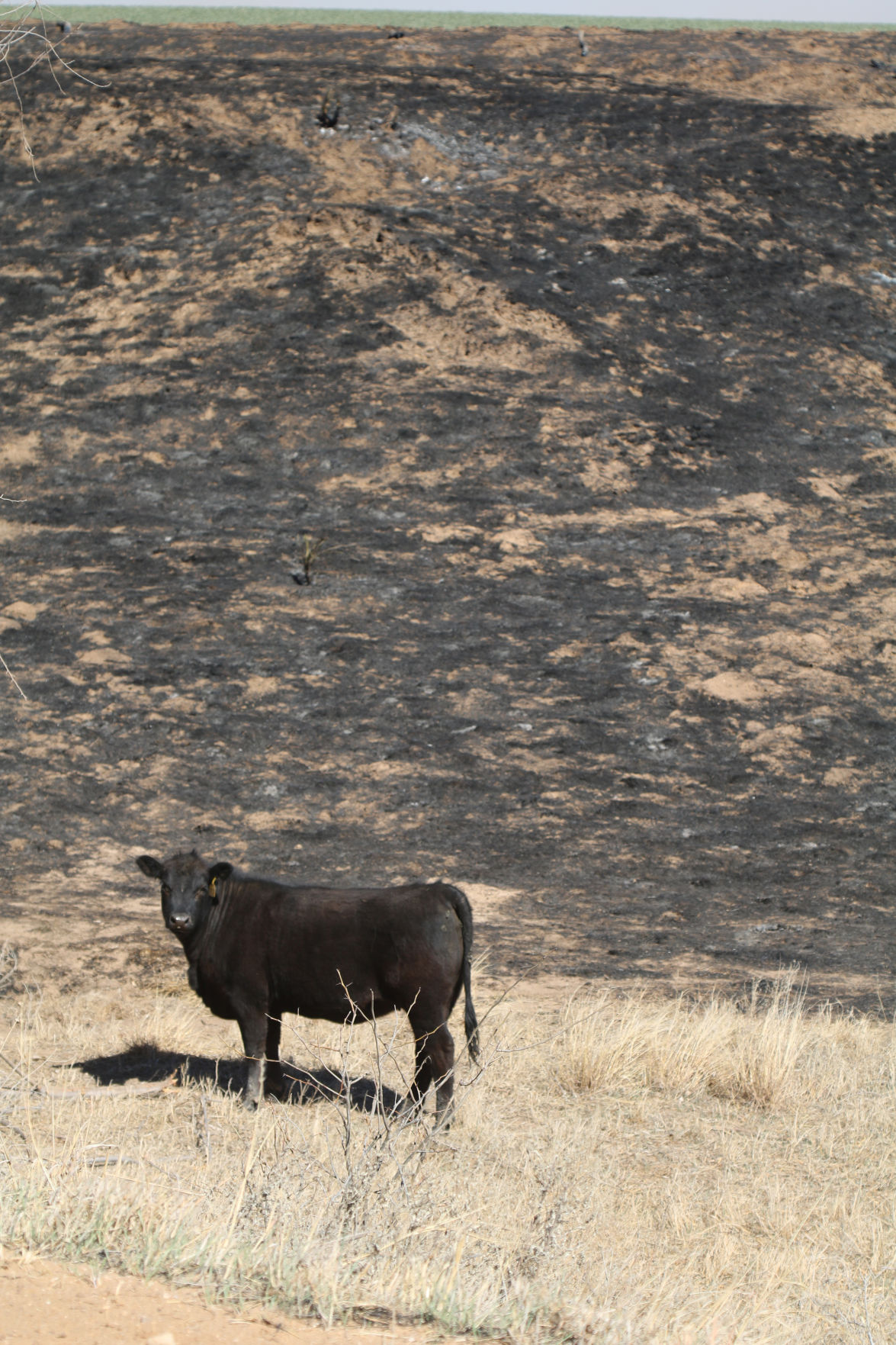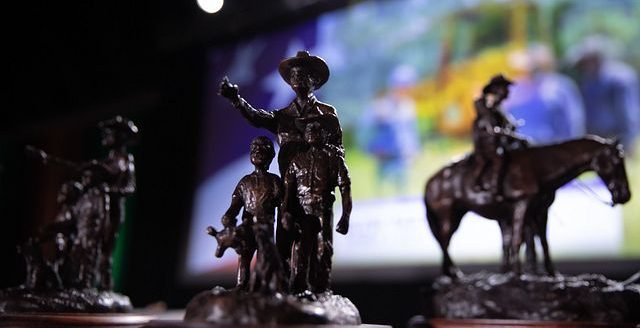They say history repeats itself.
Wildfires seem to have been stuck on repeat in recent years.
In 2016, the Anderson Creek fire in Kansas and Oklahoma set records with more than 400,000 acres burned. The Starbuck fire burned more than 800,000 acres in 2017; other fires in Colorado and Texas added to the total, pushing it over a million acres. In 2018, northwest Oklahoma was hit hard again with the Rhea and 34 Complex fires burning close to 300,000 acres.
Wildfires are seemingly becoming the “new normal” and for people like John Weir, Oklahoma State University Cooperative Extension associate specialist and fire ecologist, preparation for a wildfire event is essential. As an ecologist, he has a greater understanding of what fire does and why wildfires happen.
“We look at the effect of fire on plant communities and wildlife,” Weir said. “Above and below ground—in all kinds of aspects how fire impacts it. How fire changes the earth, changes succession, or sets plants back in our system, and what it does.”
Simple things are often taken for granted when it comes to preparing for a disaster event.
“None of this is rocket science, you know, it’s real simple,” he said. “We also just want you to be observant.”
Be prepared
Wildfire preparation happens long before the smoke and fire heads your direction. OSU released a publication in 2018, E-1048 Wildfire: Preparing the Ranch and Farm; Weir and Extension colleagues from Kansas State University, New Mexico State University, South Dakota State University, Texas A&M University and the University of Wyoming authored the sheet.
Weir said the first step is to walk around the house, barns and outbuildings. Evaluating items within 30 feet of the house.
“What you’re going to be doing is looking at what is flammable,” he said. “What do I have that’s an avenue for fire to get into my home?”
Weir wants the home, barns and equipment to be able to stand on their own during a wildfire because a fire department may not be available to protect them.
During the large fires of 2016-2018, many fire departments responding were from other areas, and didn’t know residents. Weir said removing the flammable items away from homes, can help the fire fighting process.
“If you’re thinking about remodeling or adding on, even new construction, you want to think more about how can I build to use fireproof materials or things that we’re not going to have that kind of problem with,” he said.
Windbreaks are often planted around farmsteads and are created by planting tree varieties in staggered patterns to block the wind. Certain kinds of trees go up quicker in a wildfire, and for Weir, cedar trees are the worst.
Mowing regularly is also something that can be done to lessen the extra fuel load.
“We want to mow, keep stuff short,” he said. “We may have some trees that blow leaves underneath stuff, and we’re going to clean that out.”
He also suggested keeping patio cushions and other flammable things off the porches and decks as they could start a fire. Same goes for firewood.
“Don’t stack it on the porch or right next to the house where embers can get into that and it will start a fire,” Weir said. “That kind of stuff, some of it’s a little bit of an inconvenience for us, but a little bit of inconvenience goes a long way to protecting what we’ve got.”
One of the biggest avenues for fire to get into homes and buildings is through open windows or doors. Weir says to shut everything down when you’re not around even if conditions aren’t favorable for wildfires.
Organization
Hay and equipment storage can be a challenge too. Hay should be stored well away from any type of building, in case one or the other catches on fire. Weir said certain insurance companies will only insure up to a certain value of hay.
“Check with your insurance. Know what your policy says,” Weir said.
If livestock is dependent upon the hay or it is part of an income stream, it needs to be stacked accordingly to stay protected.
“You don’t want to stack it all in one spot,” he said. “I would spread it around, and then think about strategically where you can store that at.”
Weir said the majority of wildfires in Oklahoma and Kansas come from the southwest or northwest, so stacking it on the south, east or southeast side of cultivated fields could be one way to protect it.
“It’s not going to get to it that way,” he said. “The fire is going to come around in different directions.”
Weir said those needing to store hay might think about building a firebreak around their hay storage areas.
“Again, that doesn’t stop embers from getting there, but at least it’ll keep the fire from creeping into it,” he said. “If we keep everything mowed short around where we store at and we make some better ground fire breaks around it, we’re going to definitely reduce the impact of fire hopefully has on that.”
As for the equipment, the ultimate solution would be to have storage that’s fire proof. Gravel pads or bare ground tend to be non-flammable.
Also make sure grass is mowed or grazed short where equipment is stored so weeds and grasses don’t build up around it. By keeping the grass short or the ground bare, vehicles are less likely catch fire.
“The good thing is, there is a possibility that fire may ruin your tires, but at least you still got the tractor,” he said.
Make sure windows are rolled up and doors securely shut on equipment with cabs. Try to keep trash and waste cleaned out of vehicles and equipment.
About the livestock
“One of the main things to remember, none of it’s worth your life,” Weir said. “As much as we feel that way it’s not.”
Many times livestock know where to go to get out of danger. Weir believes producers can help their livestock survive a wildfire emergency as long as they remember to ensure their own safety first.
“Don’t get in front of the fire front, it’s not worth it,” Weir said. He suggests producers think about where their cattle go in stormy weather.
If there’s time, open some gates or cut the fence. In Weir’s experience, many cattle killed in wildfires are crowded up and in corners of pastures. He also suggests feeding cattle, especially over winter, where there’s a higher fuel load to help eliminate it.
“Maybe moving your feeding grounds from corner to corner or something like that instead of feeding just out in the middle,” Weir said.
Worst-case scenario
Most importantly have a plan if a fire ever happens.
“The time to be thinking about stuff is not when it’s happening,” Weir said. “If you can cut a fence, do that, but again, the main thing is don’t put yourself in harm’s way for that.”
If you are in your vehicle when the wildfire reaches you, Weir’s best advice is to stay inside it.
“That is the safest place to be. Roll the windows up and let the fire go past,” Weir said. “You will not outrun the fires on foot. You will not survive the fire on foot. Your vehicle will not blow up. It’s not Hollywood.”
The heat may get pretty intense, and it will get smoky, but there should be plenty of air to breathe. Tires might be compromised or even blow out, and some wiring could possibly be burned.
“Once that passes, get out check the vehicle to make sure that the truck is not on fire,” Weir said.
If time permits, park on an area where it’s lighter fuels so there’s not as much heat coming at the vehicle.
After
In the past, large wildfires have come during or after a drought period. Rain is essential to repairing the grasses and for the range to recover.
“It’s about rainfall timing,” Weir said. “Once you get adequate rainfall, know we can get right back on it.”
Often, Weir doesn’t even take cattle out of the pastures during a prescribed burn.
“We burn and they’re automatically on it,” he said. “It depends on the timing of the fire—if it’s well before green up and things start to warm up it’s going be a little while.”
In many instances with wildfire, hay is going to have to be fed afterward, and that needs to be included in the preparation plan.
“You’re going to have to think about something like that, but once it starts to green up it starts to come back,” Weir said. “You’re not going to hurt it. It’s all about rainfall and stocking rates.”
For more information or to read the factsheet, visit factsheets.okstate.edu/documents/e-1048-wildfire-preparing-the-ranch-and-farm.
Kylene Scott can be reached at 620-227-1804 or [email protected].




